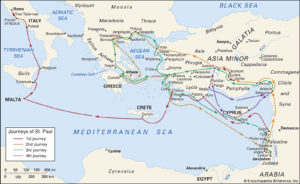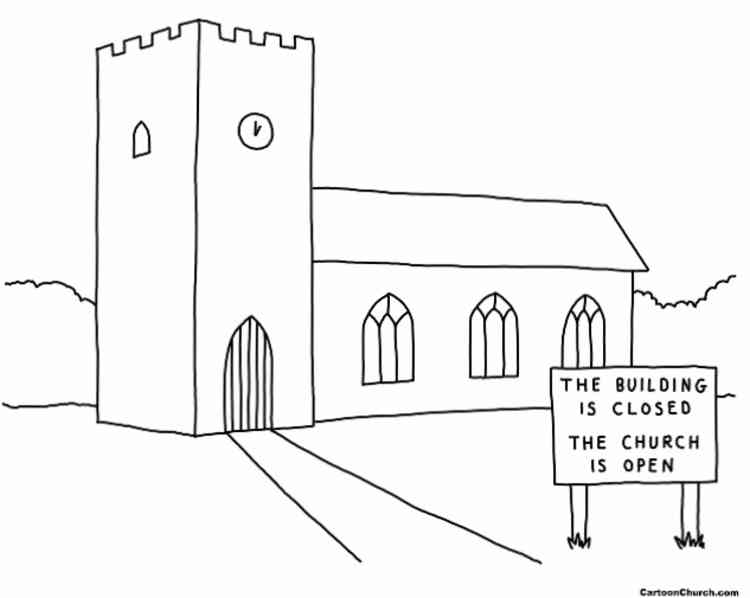Text is below the video…
” Building Closed – Church Open”. Sermon Preached Sunday October 18 2020. Goldsboro, NC Episcopal Churches. The Reverend Alan Neale
In the mid-late nineteenth century the great Baptist, The Reverend Charles Haddon Spurgeon preached at The Metropolitan Tabernacle; even as a young boy I remember being in awe of the vastness of the building as the omnibus passed by. The building held 5000 people and had an overflow of 1000; and such numbers appeared often, very often.
One day Spurgeon received a visit from one of the church members. “Mr. Spurgeon,” he said, “I plan to leave your church.” (By the way, I doubt whether Spurgeon ever referred to the church as “my church”, that is an unfortunate and lazy pattern into which some ministers fall.) Anyway… Mr. Spurgeon looked puzzled and asked for the reason. “I’m leaving your church because I am looking for the perfect church.” To which Spurgeon responded, “Well, if you find it… don’t join it… you’ll spoil it.”
For centuries now the church (global, national, local) has either been the object of vitriolic and scathing adverse criticism or it has been the recipient of praise and gratitude and wonder.
It’s either “like a mighty army moves the church of God, brothers/sisters we are treading where we’ve always trod” or it’s “blessed city, heavenly Salem, vision dear of peace and love.”
 It has been estimated that in four journeys (between 46-57AD) Paul travelled 10,282 miles in 281 days and spent about 1,731 denarii on ship travel. He did this in order to preach the Gospel, yes indeed, but he also did this to establish communities of faith; what we call “churches” from, as most of you know, the koine Greek word “ekklesia” – meaning “called out of…”. Where you, where I worship is (we believe and trust) is the place where God would have us be… to work, to witness and to worship. So “church” is crucial in the mission and in the mind of St. Paul. I happen to believe that Paul first encountered the concept of church/community/body in that Damascus Road transformation and all that followed – but that… is for another time.
It has been estimated that in four journeys (between 46-57AD) Paul travelled 10,282 miles in 281 days and spent about 1,731 denarii on ship travel. He did this in order to preach the Gospel, yes indeed, but he also did this to establish communities of faith; what we call “churches” from, as most of you know, the koine Greek word “ekklesia” – meaning “called out of…”. Where you, where I worship is (we believe and trust) is the place where God would have us be… to work, to witness and to worship. So “church” is crucial in the mission and in the mind of St. Paul. I happen to believe that Paul first encountered the concept of church/community/body in that Damascus Road transformation and all that followed – but that… is for another time.
The opening verse of the first chapter of today’s Epistle (I Thessalonians) sets out for us most clearly the model, the mode, the mission of the church.
The model. Well thank God, the model for the church is the community of love between Father, Son and (soon to appear in verse 5) the Holy Spirit. How we model our church buildings and parish plant is of importance for we want the best for our Lord and for our mission; but more crucial is how we model our church communities. Based on the triune relationship of love our earthly images should pray to be, work to be, strive to be communities of welcome, of diversity and of common purpose. We see best the Trinity not in theory but in practice… for instance, at the Baptism the Son commits himself, the Father affirms and blesses and the Holy Spirit invades with power. A church that only speaks of love but does not practice it in internal and external relationship is no church… for to be authentic, it must be modelled on the Triune God in that God’s eternal romance and labor.
The mode. Each of us will have our own image, impression, icon of Paul. I think of him striding (well, maybe not striding!) but moving forward in mission and milage; others struggling to keep pace. I think of the sad way in which he discards Mark though later there is reconciliation. – there’s a pattern to follow in church life! And yet this individual again and again aligns himself with others in the Christian community. It does not matter how old they are in the faith, it does not matter their history of family or work – the mode is to want to work with others. So I Thessalonians 1:1 “Paul, Silvanus and Timothy; I Corinthians 1:1 “Paul… and Sosthenes”, 2 Corinthians 1:1 “Paul… and Timothy” and so it continues… not always but often. It is often tempting to behave as the “spiritual lone ranger” – we know best, it is quicker this way, maybe someone will suggest a slightly different approach. We are not meant to be alone in our Christian life nor in our Christian service; when God calls us, God calls us into community and, as I have heard often, “we choose our friends… we are given our family, church family included”. I am quite sure it was not easy for the gathered, motley crew of the first disciples! What do you think?
The mission. I sometimes wonder what it would be like to have a church, one church of a community. The Church of Newport, the Church of Goldsboro. That’s how it was in the early days of the life the church. Maybe, from the divine perspective, every locality is still seen as “the church” though composed of many parts? In verses 2-9 of I Thessalonians we observe the church of God engaged in mission.
1. Work produced by faith, labor prompted by love, endurance inspired by hope – all this is made possible by, expressed in community!
2. Lives transformed, given over to Christ, despite severe suffering – all this is made possible by, expressed in community!
3. Evangelism expressed not only in words but by the witness of lives and the worship of God – all this is made possible by, expressed in community!
I try, whenever I pray for the church (global, national, local) to begin like this, “Lord Jesus, I pray for your church…”. It gives me comfort to know that Jesus loves the church, Jesus is the Shepherd of the church, Jesus died for the church, He forgives and absolves the church… this all relieves me of a terrible responsibility!
I finish with words translated by John Mason Neale (no relation): and may “this temple” speak of building and people as church…
“To this temple, where we call thee,
Come, O Lord of hosts, today;
With Thy wonted lovingkindness
Hear Thy servants as they pray,
And Thy fullest benediction
Shed within its walls always.” Amen, Amen, Amen.

